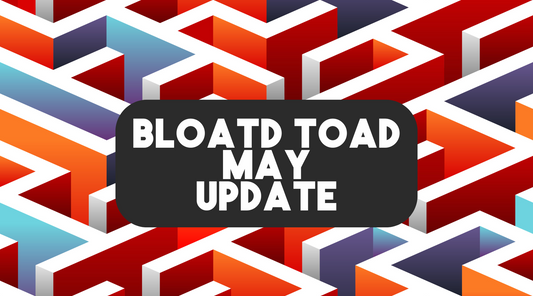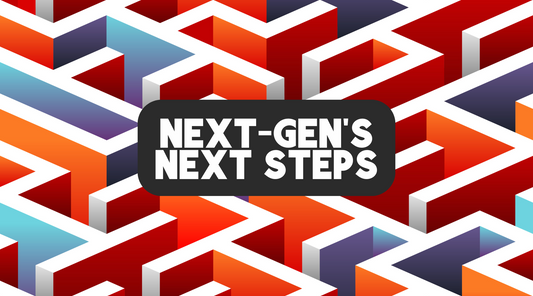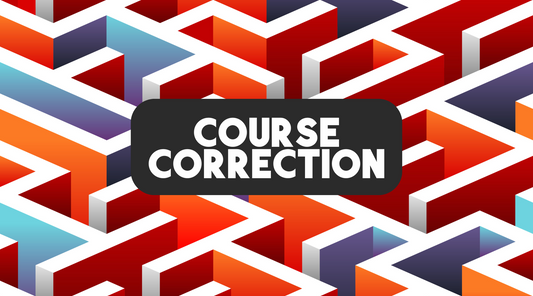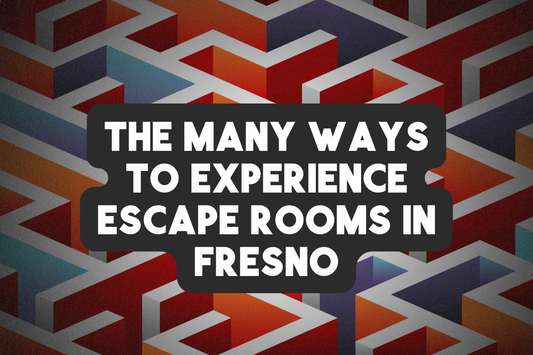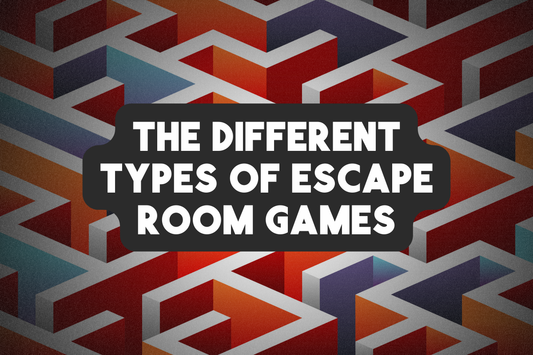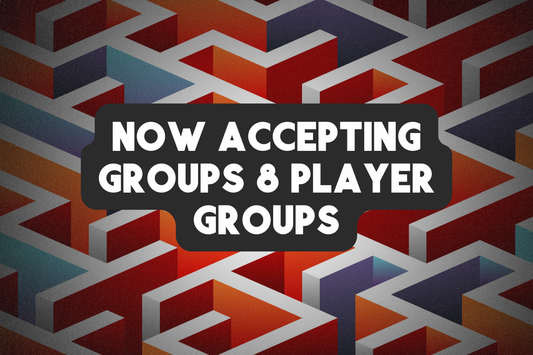Designing Tales in the Bloated Toad
Calvin KammerShare

This game is special for me, as the Bloated Toad tavern has been a staple location for all of my DnD/ttRPG games, and I’m so excited to bring it to life! It’s a totally fictional location, filled with lore about the world, and dotted with connections to our upcoming games, as well as easter eggs from our earlier games. Have fun quacking it. Here’s how the idea behind the design of the game went:
How the Toad got its Bloat:
The concept of this room starts back during 2020, where we were creating rentable play-at-home escape experiences. We had gotten quite creative with how we made the concepts for the escape games, and highly anticipated what kind of different and new games we could create when we’d eventually reopen.
One idea of dozens we had was something of a repeatable escape room. One where there would be a real incentive to come back and revisit. We had players that would like to keep playing our escape games, but we only had so much space! One way we plan to alleviate this at the new location is having multiple games available in our Mystery Room, another is the idea for the Bloated Toad!
What to expect during your stay:
In short, the Bloated Toad escape room is a repeatable tavern escape game for two to eight players, which can be booked for 30 or 60 minutes. Why the choice? Well, our new booking software will allow for it, and with this being a repeatable escape room players may find there to be real value to add a 30 minute session to another booking they make and see what changes/additions were made to the Toad. With it being repeatable, I wanted players to feel like they are getting good value for their money when they come back. It’s possible groups will need to book the full hour multiple times, but it’s also entirely possible to solve everything in one go (if you know what you are doing that is).
Finding Repeatability:
Origins
Back in the day, we had started playing a million roguelikes (genre of video games), and thought of an escape room where you could select perks as you progress, and potentially lock you out of certain puzzle tracks depending on how you solved them. This would incentivize players to try the game in new angles and would really give the sense of accomplishment when you 100% complete the room. More like a Pokemon Red and Blue escape room experience if that makes any sort of sense. Unfortunately, for many players this will be too much and we will lose interest and bookings because of it. Maybe one day, but it sounds like a better concept for the repeatable escape room board game I am currently producing on the side.
Inspiration
Another idea for the Bloated Toad was to have an actor inside the room with you. I’ve personally never been to a room with a non-player character inside it, and I’ve only heard negative feedback from players that have. “But,” I thought to myself naively, “this game will be different!” Other games with NPCs in them included a zombie or serial killer trying to physcially contact you, or this creepy one where the actor “stood in a dark corner and acted like they weren’t there.” For me, it would be an interesting idea to have your Game Master in the room with, but be interactive, as if they are a part of the room itself. This idea came about from an escape room vlog I saw where there was a magician in the center of the room, and the entire game was based around interactions with the magician. It was definitely interesting to watch the character and see the intricate level of puzzles they were able to put in the game since there was always a staff member directly observing the puzzles and ensuring a smooth game. What we could do differently is have the actor be a barkeep, and have you purchase the chance to do a puzzle to win gold. In short, we’d put a ton of puzzles in the room, but some of them you would need to pay the barkeep to access. Many of these puzzles would give you gold for completing it, others will give components useful for other puzzles. At the bar there would be a menu to choose from such as “Snake Eyes- Cost 1, Pays 3. Crossed Hearts- Cost 2, Pays 5. Etc.” Some of them could be luck based, and we would use dice or cards to simulate the luck, so you have a chance of failing puzzles. Maybe if you failed a puzzle you could reattempt it, if you have the coin of course. Being told the name of the puzzle but not what it consists of reminds me of old school arcade games, and games like Mario Party. You read a name, have no idea what you are signing up for, and just hope you have the skill or luck needed to win! However I’m not sure this would even be a great angle, as I’ve learned people don’t like being told they “failed”, even if they can attempt it again.
Conclusions
But as we are moving to the new location the idea has had to adapt again. Having a staff member in a full costume dedicated to just one room is a bit difficult to manage in 2024. With our line of merch, games, and walk-in potentials we can’t have staff be tied to micromanaging a single game. Additionally, it wouldn’t be great to have one GM having to step it up with a full costume getup while everyone else gets to work in normal clothes.
Defining Repeatability:
So then the idea morphed into a game where we make it repeatable by number metric alone. At a certain point I funneled my inner Neo. “We need puzzles. Lots of puzzles.” The goal is to remaster our favorite puzzles from all the escape rooms from the first location, and expand with plenty of new ones. As of now, the design doc for Bloated Toad has nearly double the number of steps/puzzles as to any room from our first location. But unlike any of our previous games, or any game I’ve personally seen, this game is more about obtaining a high-score, rather than solving 100% of the puzzles and escaping. Certain puzzles when solved offer a Gold coin, which when deposited into a toady bank will increase your score, and progress you closer to an unlock milestone. After collecting 3 coins by finding them or solving puzzles, players will automatically unlock a section in the barpiece, which if you can guess the gameplay loop will lead to more puzzles!
Because of this, we can have a single game offer 2 choices for time, 30 minutes or a full 60. If players reach something like 6 coins in a 30 minute game that is considered a “win” and 12 coins would be necessary in the hour long variant. There are far more than 12 coins in the game, so achievement hunters can still try to get the best overall high score in the fastest time. I also like this option for escape room enthusiasts which don’t typically require a full hour to complete the game, this gives them a lot of choice and value when it comes to booking this room.
Progression being tracked is something we would like to consider down the road, but unfortunately to accurately track progress (ie puzzles you’ve already solved before start off solved) is a bit out of scope for us as we have 3 whole other rooms to be crafting as soon as we are wrapped with this game. It may be something we revisit later, apparently the booking software we are changing to allows for progress to be tracked at the customer level for what seems like a lot of labor to setup, but easy to track after it’s setup. We’ll see down the road if we end up adding it.
An issue with tracking progression is that this is our most nonlinear room. You do need to unlock sections of the bar in order, but nearly every other puzzle can be solved out of sequence.
The largest toad in town:
The room itself was designed to be the largest single room at this location, and can house up to 8 players at once. Designing rooms for 8 players has been a challenge, making sure everyone has something fun to do is a step we never fully managed to make at our previous location. That isn't to say groups of 8 didn't have a blast, but rather I feel as a game designer there should have been a greater scope of the game to account for such large groups.
Class-based Roleplaying in an Escape Room:
To furthermore complicate the game (and drastically change it’s scope), we’ve finally decided to create a class-based escape game. Players can choose from 8 different classes, each with their own perks and puzzles to solve. I could go at length as to what the classes are and what they bring to the table, but I feel like that would make this post a bit too long. I’ll save it for another date. I will say all the classes are pretty traditional RPG classes you know and love.
To add to the nonlinearity of the room, depending on which classes you choose, early on you will be able to solve puzzles typically available much later on in the room. I’ll have to convey this somehow, but the “easiest” start will be the traditional power 4: Cleric, Rogue, Warrior, Wizard. These puzzles are little more focussed and should be slightly easier.
It’s a cool idea to return to the room and play as a different class, solving a different set of puzzles, also with a different group of friends or family. Literally the same 4 walls can house a variety of different experiences for a single player depending on who they bring and what classes they choose to experience.
Same room, same puzzles, possibly even the same players, but different escape experiences each time.
Each class has their own set of puzzles they must solve, or ask for help from others. That’s 8 different puzzle tracks, and that’s assuming you have 8 players in your group. For groups less than 8, the puzzles that would be present at the beginning of the game are now locked away, and you must progress to find them.
Unfortunately first-timers with groups of 2 will probably feel like they're in the basement from Cabin in Woods, not sure what to touch in a miasma of locks and props. But, this kinda sounds like the ultimate experience for a date-night power couple. Even more puzzles to solve!
Does it make it repeatable?
To incentivize players to come back we plan to add even more puzzles to the game after enough players have 100% completed the room. When will that be? Hard to tell. But, I think for escape enthusiasts that want a real sense of progression in a room will like to come back for a 30 minute game and see just how far they can make it this time, and see what cool stuff we add along the way. In an ideal world, escape room enthusiasts that play the room once a year or longer will experience enough puzzles to justify a whole new room experience. An idea to facilitate this in the future will be for us to minify certain puzzles, collate them into puzzle “collections” to solve in a bundle, or even entirely replace puzzles. As far as I am concerned, players care about finding NEW content, not necessarily a new space. Each of our escape rooms have a hypothesis, the Toads?
If an escape room is designed to be repeatable, then will players replay it? Hopefully if we build it, players will come.
Of course there would be announcements for when we expand the room, so there will be no guesswork as to when would be a good time to replay the game if you’ve 100% completed it.
I will say, some of these puzzles will be hard. Since I don’t feel like every single player will want to 100% complete a “room of 1,000 puzzles”, I decided to pull out some real heavy hitters at key spots. Enthusiasts should love a challenge, and strive to get a high-score. First timers can easily ignore them to focus on easier puzzles to get to a winning score. And with the incentive to raise as much coin as you can, players can be less frustrated when they can’t solve a puzzle, and should be more willing to ask for help from a player or the GM, or just move on to a new puzzle.
Thanks for reading! Soon I’ll write about the classes in this game, how the Bloated Toad got it’s name, other upcoming rooms, and plenty of other topics.
-Calvin

